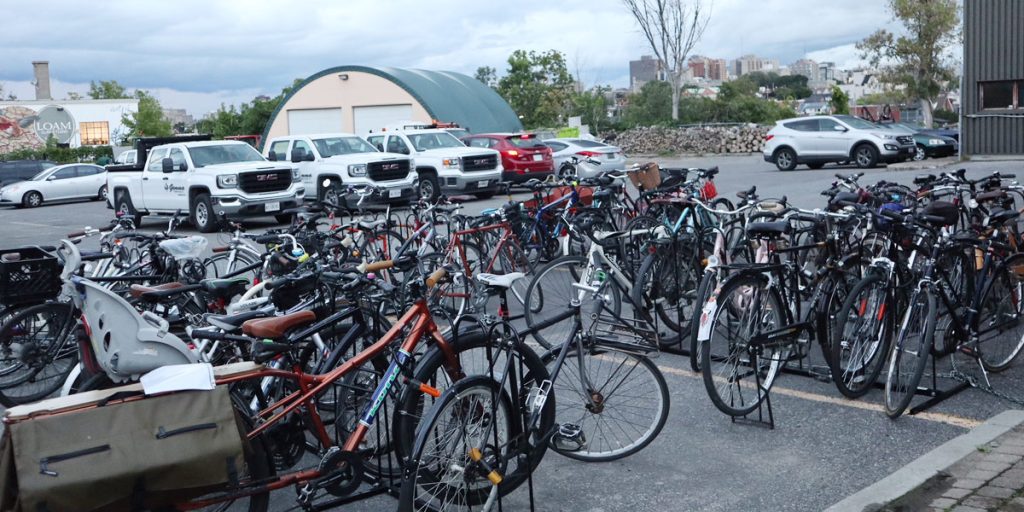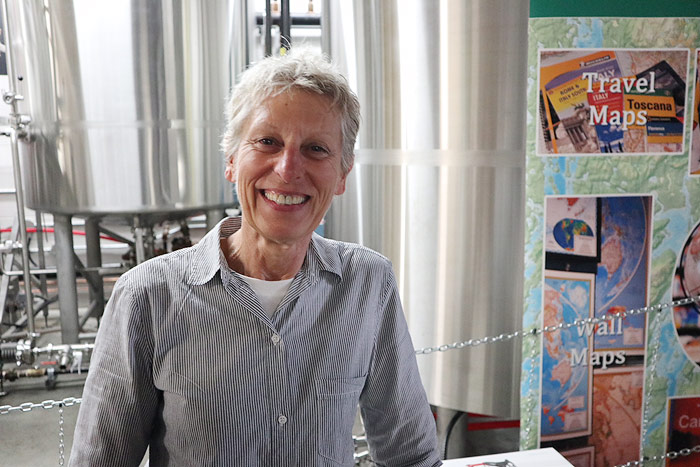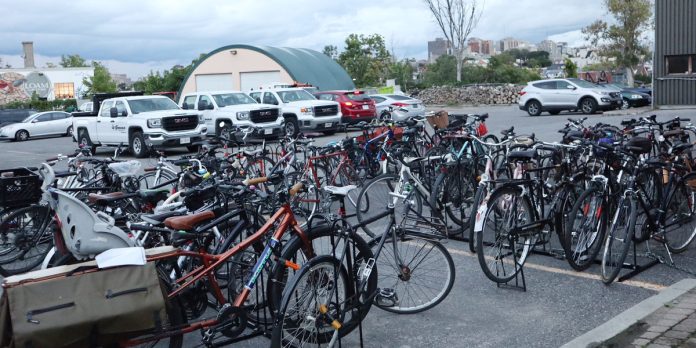By Jared Davidson –
On Wednesday August 29, on the very outskirts of Kitchissippi at Vimy Brewing, a couple of Vancouverites were in town signing copies of a new book. The book, Building the Cycling City, is a result of Chris and Melissa Bruntlett’s long experience with cycling activism, running the cycling blog ModacityLife.com, as well as a recent journey to The Netherlands to learn what that region of the world got right when it comes to cycling.

“It’s not just about cycling,” says Melissa. “The whole way they’re designing cities is putting people first.”
The tone struck by Building the Cycling City is one of optimism. According to Chris and Melissa, there’s no reason we can’t do it here, and reap the same benefits.
“Often people frame the conversation as a sacrifice, and they frame it ‘car equals bad,’” says Chris. Instead, he hopes that his book can shed light on the positive results that occur, almost inadvertently, from creating better cycling paths, routes, and lanes. There is more space for driving, more space for living, and smoother, more modern cities result.
In fact, even in Ottawa we have found that building a better cycling infrastructure benefits everyone. Kitchissippi Councillor Jeff Leiper has been an advocate for separated bike lanes in our ward, and is an avid biker himself, and his experience and his knowledge of the data lead him to a similar optimism.
““The city is going through a major transition,” he says. “We are shifting away from the emphasis on private vehicle travel.”
He, and advocates like Chris and Melissa, believe strongly in separate infrastructure for bikes. They are resisting trends that lead to the incorporation of bikes into traffic, which they say results in more fatalities. Chris is wary even of painted (not segregated) bike lanes, which he says are just a band-aid solution.
“Human behaviour is human behaviour, and you’re not going to change that,” he says. “In The Netherlands they have designed their streets to remove that margin of error so that a little mistake doesn’t result in a large injury or a loss of life.”
We need to do that here, he says. And soon. What we shouldn’t be doing is something Chris and Melissa refer to as “tribalizing” the issue. We don’t want to make it an issue of cars versus bikes any more than it has already become. When they see marketing designed to improve the image of the biker, but which still has a very stereotypical-looking biker featured, Chris and Melissa would see that as “othering.”
“This is why we try to feature more diversity in our imagery,” says Melissa. “Men on suits going to work, people of all ages – we feel it’s important to be able to see yourself on the bike.”

World of Maps was on site selling the book, and Petra Thoms, the Dutch co-founder and owner of the 24-year-old Kitchissippi store, was able to confirm that the Dutch do in fact have two different words for cyclists wielrenner (“wheel runner”) and fietser (“cyclist”), the latter being more of an everyday sight, while the former would be more associated with racing. She says she knows this because everyone in The Netherlands bikes; it’s normal there.
“Being Dutch, it’s a given,” she says.
For information on how to obtain a copy of Building the Cycling City, go to the authors’ website at modacitylife.com.
